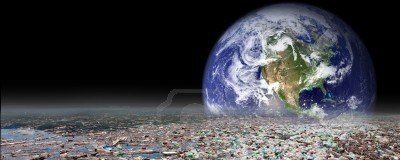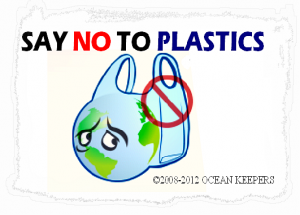An international group of scientists think it is time to consider categorizing some plastic waste as toxic according to a recent LA Times article. Considering the damage to the environment and the health hazards posed by plastic debris and plastic pollution, many believe this is about time.
The throwaway mentality of all things plastic including single-use plastic bags and bottles has burgeoned into an ecological disaster of monstrous proportions in the last 30 years. The tide of plastic debris that has spread throughout the world’s oceans and across every continent poses health hazards to wildlife, marine life and the world’s populace.
It isn’t just the plague of plastic choking the seas as far as the Artic, or the enormous costs of cleaning up our coastlines reaching $500 million annually on the west coast alone. It is having to deal with the unintended consequences of mindlessly tossing vast quantities into the environment without recycling.
Scientists, researchers and marine biologists have found:
- Mutant fish with toxins stored in their fats thought to be caused by two General Electric manufacturing plants along the Hudson River that produced PCBs (polychlorinated biphenyls) from 1947 to 1976.
- One third of the fish caught in the English Channel have plastic contamination.Researchers estimate that fish living at intermediate depths in the North Pacific swallow as much as 24,000 tons of plastic debris a year.
- Science Daily found BPA, or Bisphenol A,(used as a hardener in polycarbonate plastics and as the lining in food and beverage containers) has been linked to childhood obesity, along with adverse effects on the heart and kidneys of adolescents.
- The National Academy of Sciences just published a study conducted by Washington State University and recently reported on Fox News . The study found compelling evidence that Bisphenol A may negatively impact women’s reproductive systems, cause chromosome damage, birth defects and miscarriages.
Plastics do not biodegrade; they photodegrade, breaking down into smaller particles and microscopic bits in the oceans. These plastic bits and their chemical compounds find their way into the food chain as they are ingested by over 180 known marine species.
Degrading plastics leach toxic chemicals such as bisphenol A into the seas. Smaller fish and crustaceans mistake the plastic debris for food are then eaten by larger and larger species. Estimates are there are six times as much photodegraded plastic is in the oceans than is plankton!
Scientists are now calling for a similar approach to fighting plastic debris and pollution as has been used in the past to fight fluorocarbons and refrigerants worldwide. In particular, they want to classify PVC, polystyrene, polyurethane and polycarbonate as the most hazardous/toxic plastics.
The U.S. could take lessons from many countries when it comes to managing plastic trash, especially Japan where 77% of its plastic waste was recycled in 2010.
It should also be noted that Canada, the European Union, and China have banned BPA in some uses. The World Health Organization calls Bisphenol A a particularly dangerous chemical also linking it to cancer and birth defects.
A complete report on the damage done to the environment, entitled Plastic Debris in the World’s Oceans, has been put together by Greenpeace. The 44 page report details the scale of contamination along with workable solutions.


